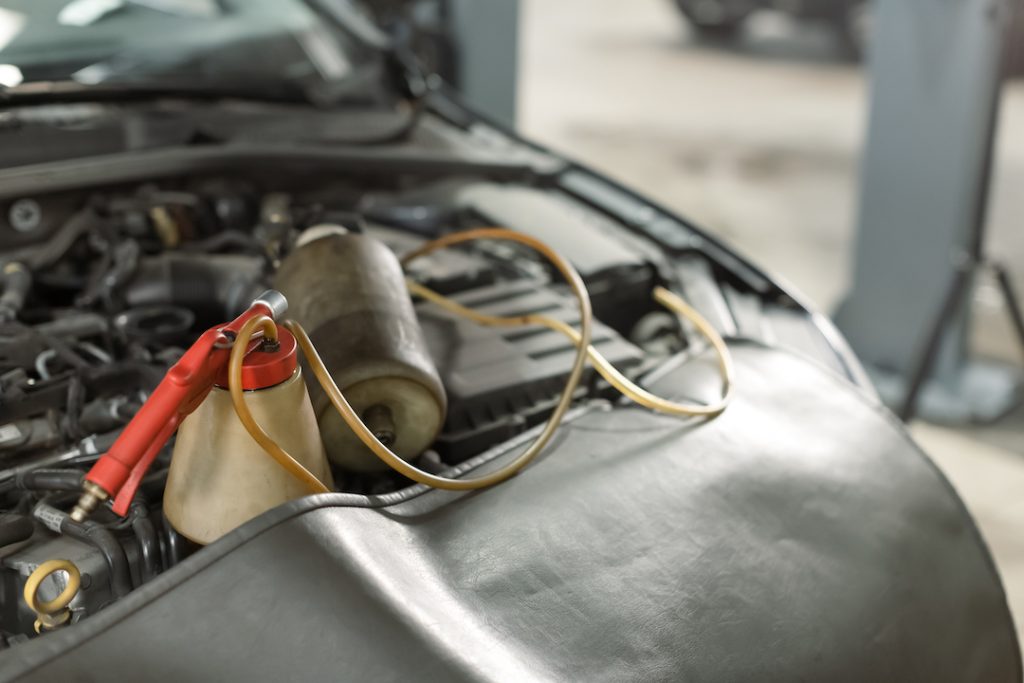Auckland Mechanics – Transmission fluid change
Your vehicle is a complex puzzle of hundreds of interdependent parts. Each component has a role to play, and each one is important in helping your vehicle run smoothly and safely.
One of the underdogs of vehicle maintenance is the transmission fluid. Most drivers pay attention to when they need to fill their car with petrol or diesel, and they know a thing or two about the importance of regular oil changes.
But many of us don’t think about changing the transmission fluid in our vehicles. So let’s take a look at its function and importance – and how often you should be changing your vehicle’s transmission fluid.
What is transmission fluid and why does a vehicle need it?
In short, the purpose of transmission fluid is lubrication. It helps keep your engine lubricated and keeps all of the moving parts of your transmission running smoothly. Quite literally, it is responsible for the smooth functioning of all the parts in and around your vehicle’s transmission. Without this lubrication, the metal parts and bearings of the transmission would grind against each other, create heat and break down.
The transmission is a complicated part, and there are several different types. A quick explanation is that the transmission is what transfers power from the engine to the wheels. It controls the gear ratio, adjusting as the car speeds up or slows down.
Transmission fluid, in addition to keeping the gears lubricated, also helps with the operation of the torque converter, valve body and clutch friction. It also is needed to cool down the transmission and provide friction for the brake band. If your gearbox overheats, it produces debris, which will start wearing down parts inside the gear case.
How do you check your transmission fluid?
New transmission fluid is red in colour (which is why you’ll hear some mechanics refer to it as the blood of your vehicle). It’s dyed red in the manufacturing process, probably so that it can be easily identified and distinguished from the other fluids your vehicle uses (engine oil, radiator oil, washer fluid, coolant).
Transmission fluid gets darker over time, changing from its original bright red colour to a brown (then possibly black) appearance. It will also begin to develop a burnt smell over time.
To check your vehicle’s transmission fluid:
- Park on a level surface and pop open the bonnet
- Look for the transmission dipstick; it is often red (make sure you know which is the one for the transmission vs the engine oil dipstick – you may need to check your vehicle’s owner manual)
- Pull the transmission dipstick out slowly and carefully
- Wipe it on a rag or paper towel
- Check the colour of the transmission fluid – it should be close to its original red colour
- Check the level of the transmission fluid – there should be markings on the dipstick
If the transmission fluid is no longer red, it’s probably time to change the fluid. This involves flushing out the old fluid and replacing it with new fluid. If that’s not something you’re able or willing to do yourself, give us a call and we’ll book you in for a transmission fluid change.
Other ways to determine if you need to change your vehicle’s transmission fluid
Even if you haven’t checked your vehicle’s transmission fluid using the dipstick check, there are other signs that it may be time for a flush or top-up:
- noisy gears, gears that grind
- unexpected gear shifts, or gears that shift early or late
- difficulty changing gears
- overheated transmission, detected by a burning smell or gear slippage
- puddles under your car
- a warning light on in your dashboard (“check engine”)
What happens if you don’t change your transmission fluid?
Transmission fluid, in addition to keeping the gears lubricated, also helps with the operation of the torque converter, valve body and clutch friction. It also is needed to cool down the transmission and provide friction for the brake band. If your gearbox overheats, it produces debris, which will start wearing down parts inside the gear case.
Low transmission fluid levels or old transmission fluid will result in insufficient lubrication. Your vehicle’s gears will probably start to grind, causing a costly problem to fix. It may also create problems in shifting gears (regardless of whether you drive an automatic or manual vehicle, making it harder to speed up or slow down. This may lead to an accident. Neglecting your vehicle’s fluid levels can lead to safety issues, so it’s best to pay attention to its transmission fluid requirements.
How often should you change your vehicle’s transmission fluid?
A common guideline used for transmission fluid changes is 50,000 kms. It’s important, however, to check your vehicle’s owner manual. There are many different types of transmissions (automatic, manual, CVT, triptonic, dual-clutch, etc.), and every vehicle has different needs.
How often your vehicle needs maintenance and fluid checks will depend on:
- the type of vehicle you drive
- what type of transmission it has and whether it is automatic or manual
- the type of driving you do and the amount of driving you do
- the weather and road conditions you drive in
- the type of transmission fluid you use (synthetic fluids last longer than mineral-based ones)
It’s best to get in touch with us at Roskill Auto Mechanical, and we can determine if your vehicle is due for a transmission fluid change.
Contact us online or call us on 092421870 for a free quote or to book an appointment.

